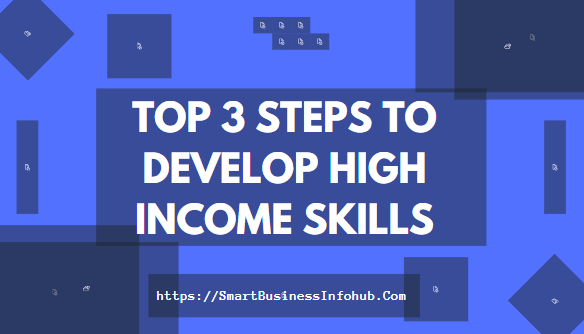‘Fail fast’ is an adage in business that more people should know. It is applicable to a wide variety of different business models and that’s particularly true when it comes to selling affiliate products. Read on to learn more about Why You Should Stop Selling to Internet Marketers.
What is ‘Fail Fast’?
Fail fast essentially means that you should aim to succeed or fail quickly.
Whereas our initial instinct is to do everything we can do to succeed in business, this can sometimes lead to us investing too much time, effort and money into a single idea.
In other words, you end up spending months on your landing page, on choosing your product, on priming your mailing list and on creating the perfect storm in which to sell.
So if that product then falls flat on its face, it’s going to leave you badly out of pocket and badly disheartened regarding your efforts.
Failing fast on the other hand means selling an MVP – or a minimally viable product – so you can very quickly get a feel for the market and whether or not there’s an audience for your product.

When selling affiliate products, the good news is that you don’t have to make anything. As you’re selling a product that already exists, you can in theory start profiting very quickly – in other words, it lends itself perfectly to the ‘fail fast mentality’.
But you can fail faster…
CLICK HERE: Top 20 Places You Can Promote Your Business For Free
Fail fast, testing, and iteration can be an integrated part of the strategic process
Perhaps the best example of how the fail-fast philosophy can be centrally integrated into an organization’s strategy process is the approach described by A.G. Lafley and Roger Martin in Playing to Win: How Strategy Really Works.
The following represents the strategy process defined in that work:
- Frame the choice: Turn challenges into mutually exclusive approaches that might address the issue.
- Generate possibilities: Expand the list to be as comprehensive as can be .
- Specify conditions: Identify conditions that must be true in order for the possibility or approach to be a viable solution.
- Identify barriers to choice: Determine which of those conditions is least likely to hold.
- Design tests: Build a valid test of the hypothesis (that the entire strategy team agrees is a valid).
- Conduct tests: Execute the tests and review results.
- Choose: Based on results, choose the path forward.
On its surface, this approach might not look like what you typically think of when you hear “fail fast,” but it demonstrates how the tradeoff between strategic planning and fail-fast approaches are actually a false choice. Designing thoughtful, creative, and strategic tests can be a critical component of an organization’s core strategy process.
CLICK HERE: Top 12 Benefits of Being a Web Designer
In some ways, this approach takes the fail-fast mentality even further by focusing the initial tests on the elements of a strategy least likely to succeed. The reason for doing this is that if a strategy rests on four assumptions, and you test the easiest three first and those tests all succeed, and then the final, most-difficult test fails, the time spent on the three successful tests was actually a waste.
In our desire to see ideas succeed, it would be easy to start with the assumptions most likely to hold. But a desire to get to the right answer quickly should push us to test the most difficult pieces first.
Selling to Internet Marketers – Best practices for failing fast
The fail-fast mentality can be applied to problems both large and small, but getting results with this approach rests on some important pillars that can determine the success and impact of the program.
I asked my colleague (and general growth wizard) Peter Ikladious what he thinks of failing fast and he said, “I find that fail fast is a great concept that, despite many orgs stating it, it’s hard for them to actually do it. Fail fast needs top leadership buy-in. They have to recognize that there are no magic bullets and that not everything will work as expected. Without leadership support, teams are either too scared to try anything that could fail or do things in private which limits the learning effects of failing fast.”
CLICK HERE: Top 12 Benefits of Email Marketing For Business
There are two really essential ideas in Peter’s comments that ring true with my experience and the approaches within Playing to Win.
The first is that leadership needs to really buy the approach. If teams are given the opportunity to explore new ideas and the confidence that their jobs, careers, bonuses, and promotions aren’t at risk if an idea doesn’t succeed, that’s an environment where testing and innovation can thrive.

In my experience, it’s even better to reframe the notion of “failure” altogether. The testing process is about both the speed at which a business can get to the right answer and the learnings along the way.
If the supposed failures are documented and internally communicated in really clear, compelling ways, that experience can help other teams avoid testing the same ideas over and over again. In that sense, the results of any test, regardless of success or failure, represent an increase of an organization’s institutional knowledge if they are documented and shared appropriately. That knowledge has value.
A successful test could be one that doesn’t work but that no one in your organization ever wastes time attempting again.
This thought bridges into the second, which is that the real impact of tests can only be achieved when paired with transparency. This transparency is essential for generating buy-in, driving scale, and even sharing learnings of what doesn’t work. Without the “learning effects,” as Peter described it, much of the value in terms of institutional knowledge is never created.
How to Test the Market Quickly
One way to do this is by streamlining the process of creating landing pages and setting up advertising campaigns. Likewise, you can look for affiliate products that provide the sales script for you and other raw materials. This way, you can very quickly start adding new items to your roster.
CLICK HERE: 13 Best Business Ideas to Start and Make Money
Better yet, you can start each new product you want to sell with a PPC advertising campaign. That way, you can see which items get a good response and only invest in making a good landing page for those that make a lot of sales for you.
In theory, there’s nothing to stop you from selling 100 affiliate products at a time. So keep this in mind and remember the 80/20 law – that 80% of your yields will come from 20% of your products. The trick is to act fast so that you can find those potent 20% without wasting your time or money.
Summary
Failing fast is not the answer to every business problem that exists in the world, but it is a useful methodology for managing uncertainty and risk in an intelligent, cost-effective way. It doesn’t tell you what problem to solve, but it can help you assess the best way to solve it.
While not rocket science, the keys for any good-fail fast approach rest on the following:
- Designing valid, strategically impactful tests.
- Creating an environment that values this approach and redefines failure.
- Building a culture of transparency and institutional knowledge.
Like any tool, failing fast works best when it’s paired with the right job. Failing fast is not a substitute for the work organizations do on strategic analysis and planning but it can be a useful tool incorporated into that process. It can help quickly validate or invalidate the core assumptions any idea rests on. It can make a company more honest with itself much more quickly. It can also increase an organization’s appetite for risk and innovation by minimizing the time and expense of evaluating new ideas.
CLICK HERE: Top 7 Ways On How To Get Inbound Links To Your Website
The fail-fast philosophy can ultimately be applied to small tests and programs without much effort or thought, but it can take some really creative thinking to apply it to an organization’s larger problems.
When applied correctly, fail-fast approaches can, ideally, be used to increase the size of the ideas an organization tests while decreasing their cost. Any organization that can get that mix right and scale learnings and outcomes effectively will be able to move faster and with greater impact.
That should be the real, final objective of any embrace of fail-fast philosophy. It’s not about increasing the volume of tests an organization does, it’s about increasing its net impact, with testing as a means to that end.









